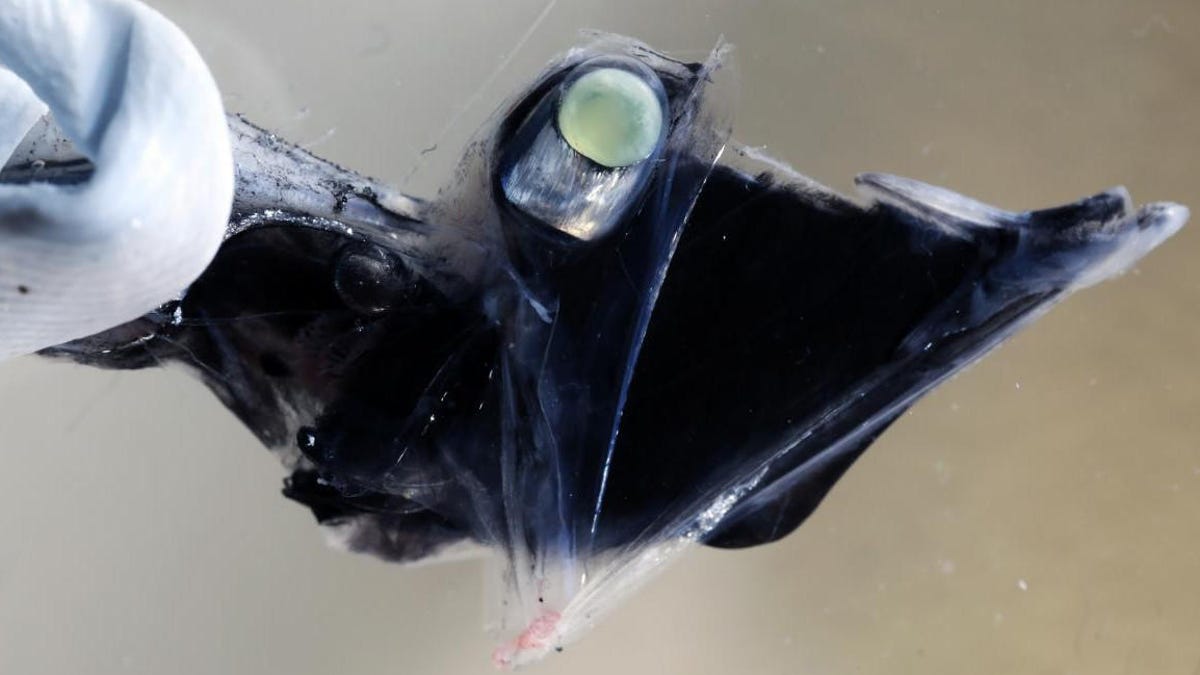Scientists discover nightmare fish in the deep, dark ocean can see in color
No light? No worries.

The diabolical nightmare, the Tub-eye fish, lives in the deep, dark ocean -- but it can still see in color.
At CNET, we're big fans of the diabolical, terrifying and wonderful creatures that inhabit the deepest depths of the Earth's oceans.
At a depth of 650 to 5,000 feet, some of these nightmare fish live in absolute darkness. As a result, evolution has dictated they don't really require spectacular vision -- it's better to sense your world with electrical impulses or touch, rather than through eyeballs.
However, an international collaboration of researchers have discovered several species of fish that likely can see in color, even in regions of the ocean that light cannot reach. Their work paints a new picture of life in regions of the ocean that receive no sun and shows how different vision can be in the deep.
The findings, published in Science Advances on May 10, reveal an array of eye adaptations that the creepy denizens of the deep have at their disposal. Analyzing the genomes of 101 species, the research team found 13 which had genes that would allow them to perceive in color. One species in particular, the silver spinyfin, had a huge assortment of genes that likely means it can pick up many different wavelengths of light.
"This is the first paper that examines a diverse set of fishes and finds how versatile and variable their visual systems can be," said Karen Carleton, co-author of the paper, in a press release.
To see, vertebrates use special proteins known as opsins, which can absorb light. The team looked at a specific type of opsin which is used to see in low light. Scientists suspected that many of the fish would have just a single rod opsin -- which means they can't pick up color -- and this mostly turns out to be true. But in the species the research team looked at in this study, 13 species had more than one opsin and the aforementioned silver spinyfin had a stunning 38.
The silver spinyfin.
They then put those opsins to the test with simulations and assessed if they could "see" wavelengths of light, such as those associated with bioluminescence of deep sea creatures. They suspect that fish, such as the silver spinyfin, can detect very faint levels of light.
"If you want to survive down there you need to quickly decide if you are seeing a potential predator or potential prey," Fabio Cortesi, a co-author on the paper, told the University of Queensland.
The team suggest several scenarios for the proliferation of color vision in the deep. For instance, it may enable identification of food. The 38 opsins found in the spinyfin may also "switch on", genetically, at different points in the fish's life, helping it navigate early life and detecting different signals as it ages.
Whatever the case may be, further work will be needed to understand how these adaptations work in the natural environment. The depths of the world's oceans aren't the easiest place to study, but I am incredibly thankful that clever teams far braver than I continue to unravel the mysteries of the dark.

